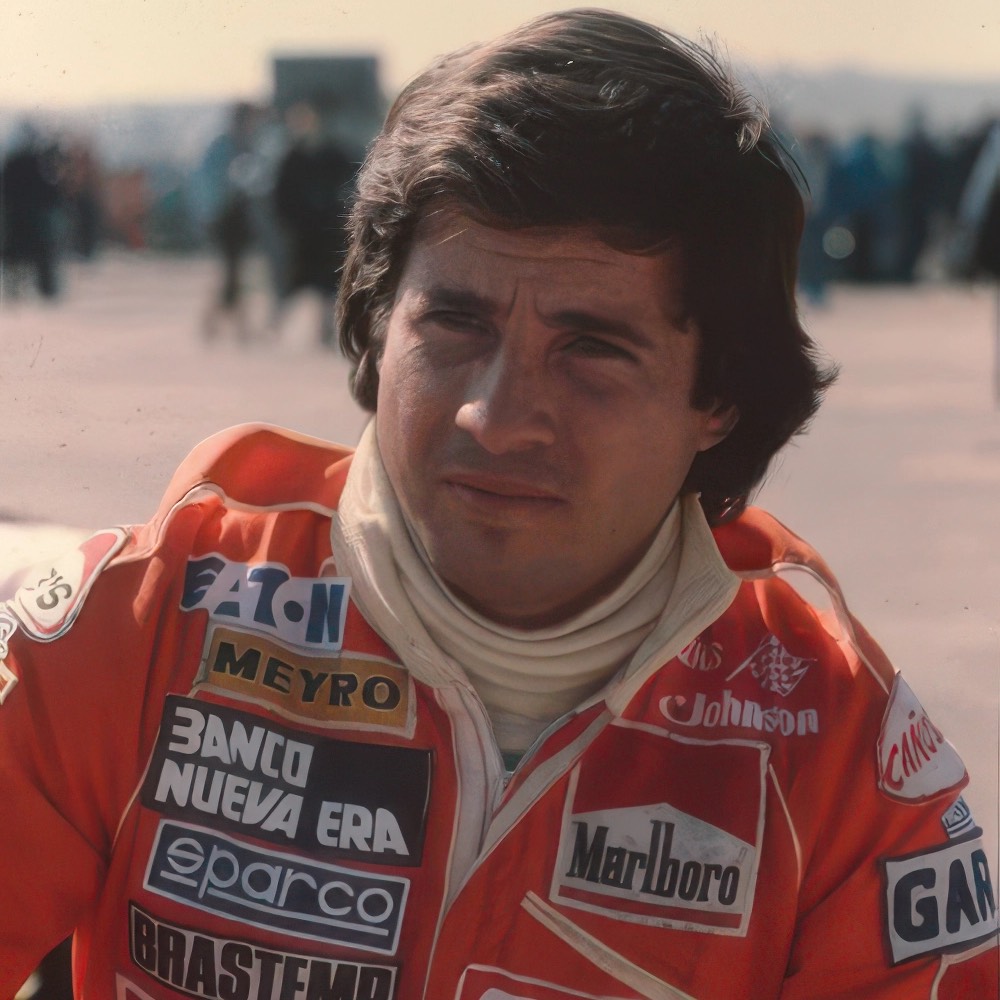
Miguel Ángel Guerra
Career Statistics
Biography
Miguel Ángel Guerra (31 August 1953 - Present): Argentine racing driver from Buenos Aires who participated in four Formula One World Championship Grands Prix in 1981, qualifying for only one—the San Marino Grand Prix at Imola—where he was hit by Eliseo Salazar's March on the first lap, suffering a broken wrist and ankle. Guerra achieved significant success in Argentine national racing, winning multiple Formula 2 and Formula 4 titles between 1974 and 1977, and later winning the 1989 TC 2000 touring car championship. Born in Buenos Aires, Guerra began racing in 1971 under the tutelage of Renault importer and tuner Osvaldo Antelo, who recognized the young driver's potential. Guerra entered his first Argentine Formula 4 race in Nueve de Julio, showing immediate promise.
In his first full season in 1972, he finished runner-up to Carlos Jarque, and in 1973 finished second to Jorge De Amorrortu—successive near-misses that demonstrated speed without quite achieving championship success. Guerra's breakthrough came when he moved to Argentine Formula 1 (a national category unrelated to World Championship Formula One). Driving a Berta in 1977, Guerra made his Argentine F1 debut and dominated, scoring three victories and seven podiums in nine races. He won multiple Argentine Formula 2 and Formula 4 titles between 1974 and 1977, establishing himself as one of Argentina's leading drivers.
Feeling ready to move to Europe after his Argentine successes, Guerra found sponsors back home and traveled to Italy in 1978. On 14 May 1978, he competed at Imola in the European Formula 3 Championship driving a Wolf-Toyota. Remarkably, on a track he had never driven before, Guerra qualified fourth in his heat and finished fifth—an impressive debut that caught attention. Impressed by Guerra's performance, Minardi offered him a drive for the rest of the 1978 season with Scuderia Everest.
Guerra competed in European F3 through 1978 and 1979, achieving moderate success without dominating. His European experience gave him the credentials to attempt Formula One. Guerra's Formula One opportunity came in 1981 with Osella, a small Italian constructor perpetually struggling at the back of the grid. He attempted to qualify for four races but succeeded only at the 1981 San Marino Grand Prix at Imola on 3 May.
Starting from near the back, Guerra's race lasted less than one lap. At the first corner, Chilean driver Eliseo Salazar's March collided with Guerra's Osella. The impact sent Guerra's car into a wall, and he suffered a broken wrist and ankle—painful injuries that required hospitalization and months of recovery. Four entries, one start, zero finishes, zero points, one serious injury—Guerra's Formula One career was over almost before it began.
Following recovery, Guerra returned to South American racing. Racing a Berta-Renault in Argentine Formula 2, he took four podiums, a victory at Concordia, plus three fastest laps, demonstrating he had lost none of his speed. In 1984, he was vice-champion of Formula Two Codasur (the South American F2 championship), finishing runner-up in another close championship battle. Guerra's greatest success came in 1989 when he won the TC 2000 championship, Argentina's premier touring car series.
The championship victory, achieved against fierce competition in powerful touring cars, established Guerra as one of Argentina's most versatile drivers—successful in single-seaters, sports cars, and touring cars. Known for his three Argentine F1 victories (national category), European F3 competitiveness on unfamiliar circuits, broken wrist and ankle from first-lap crash at 1981 San Marino Grand Prix, Formula Two Codasur vice-championship, 1989 TC 2000 touring car championship, and career spanning single-seaters to touring cars across four decades, Miguel Ángel Guerra represents the talented South American drivers whose Formula One opportunities were limited to struggling teams with uncompetitive equipment.
His success in Argentine racing demonstrated genuine ability, but his single Formula One start ended in a hospital rather than glory, preventing any meaningful assessment of his capabilities at the sport's highest level.